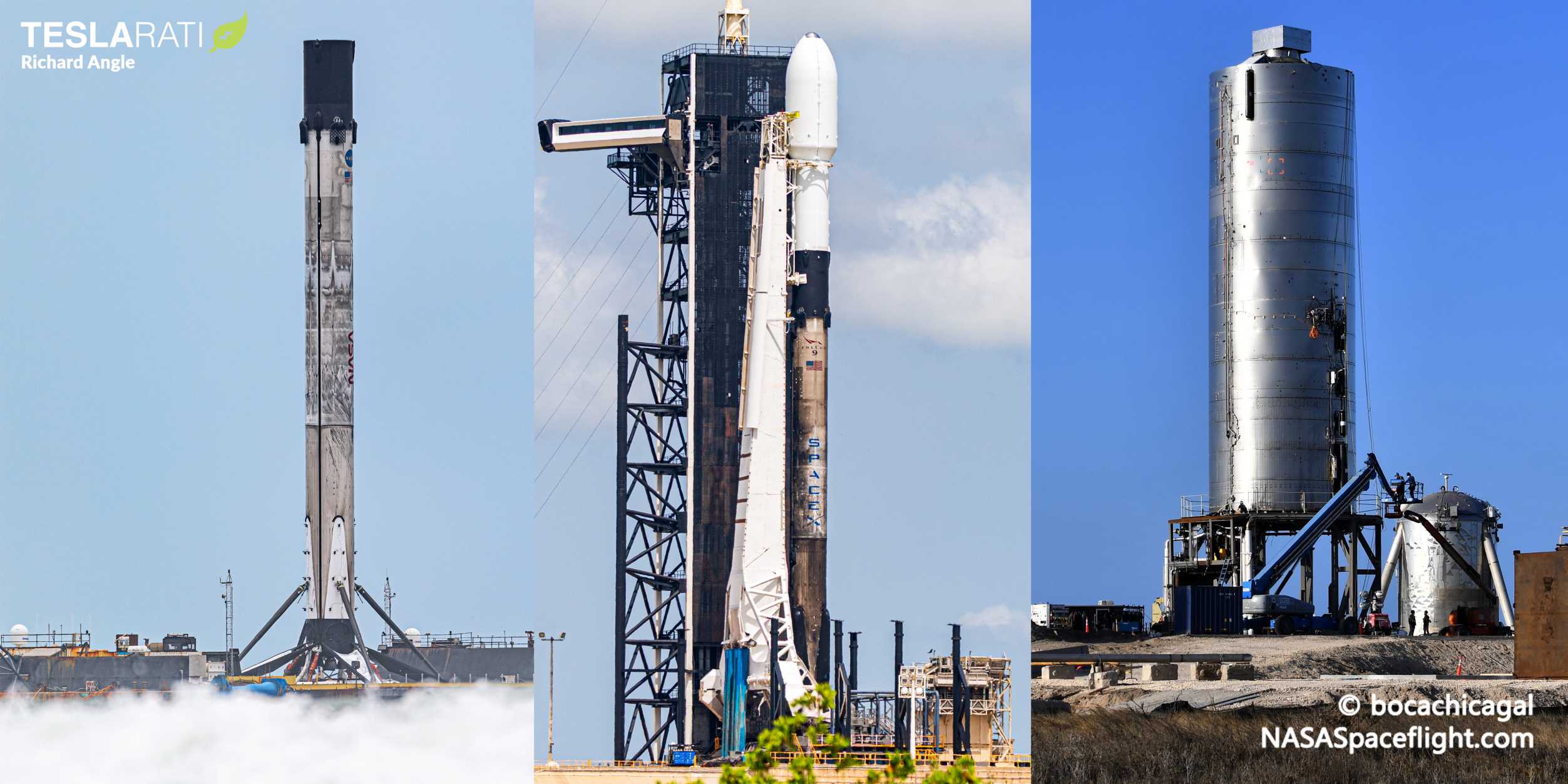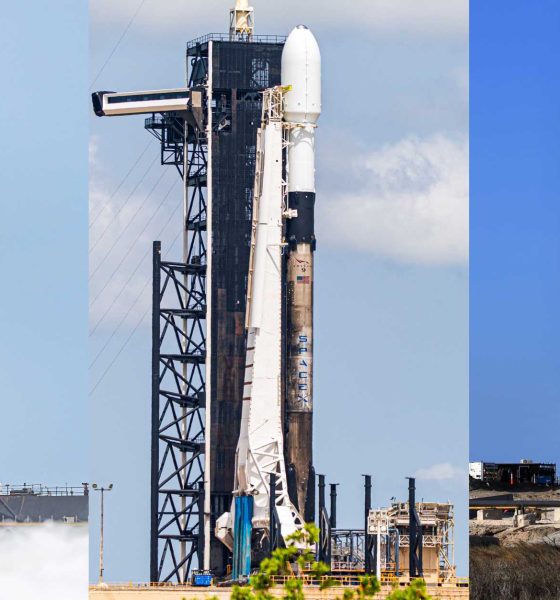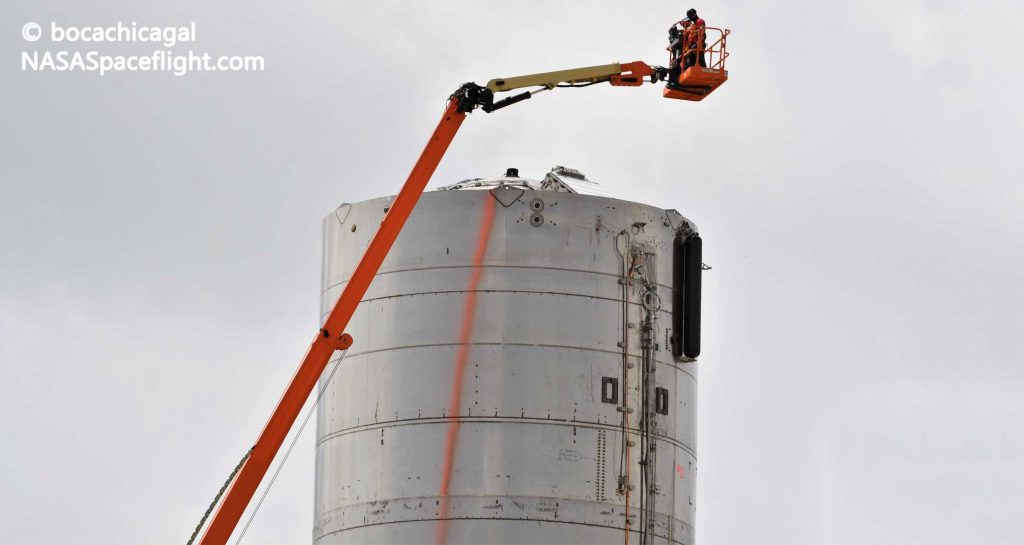

News
SpaceX hit by back to back Falcon 9 and Starship rocket delays
SpaceX has been hit by multiple back-to-back Falcon 9 launch and Starship test delays in a period of a few days, ending the company’s second attempt at a potentially record-breaking month.
Originally scheduled to launch no earlier than (NET) June 22nd, give or take, SpaceX’s own Starlink-9 satellite mission kicked off the misfortune and has suffered the most. After SpaceX announced an indefinite delay on July 11th to allow for “more time for checkouts”, Starlink-9 is not expected to launch for several more days at best. On July 13th, SpaceX announced that another summer mission targeting a NET July 14th launch had also been delayed indefinitely to allow teams to inspect the Falcon 9 rocket’s upper stage and potentially replace hardware.
Those two delays have had follow-on effects on subsequent launches planned in late July and early August but the actual end-results will be hard to determine until SpaceX has settled on alternate launch dates for Starlink-9 and ANASIS II. Meanwhile, all throughout those orbital-class launch delays, the first Raptor engine test with SpaceX’s fifth full-scale Starship has been consistently delayed and is now expected no earlier than this week (roughly July 15-19). The swath of delays have been so pronounced and oddly simultaneous that CEO Elon Musk even weighed in on Twitter yesterday, shedding a bit of light on the situation.

On July 13th, in response to a Spaceflight Now article detailing a few of those setbacks, Musk revealed that SpaceX is “being extra paranoid” – presumably the cause of most of the recent delays. Per Musk, “maximizing [the] probability of [a] successful launch is paramount” to SpaceX – not exactly a shocking revelation but still good to hear. Over the last six or so weeks, SpaceX has attempted to substantially ramp its launch cadence, targeting an unprecedented four launches in June 2020.
Delays reared their head, however, beginning with Starlink-9 around the last week of the month. SpaceX simply carried its four-launch-month ambitions into July, although that goal has already been pushed out of reach before the first launch of the month. As of July 1st, SpaceX has completed 11 launches in 2020 and has at least another 16 within tentative launch targets in the second half of the year. To complete all 16, the company would have to average almost three launches per month for the rest of 2020, a cadence it’s only managed to sustain for two or so months at a time.
Before ANASIS II’s indefinite delay was announced, Falcon 9 booster B1058 was on track to smash the world record for the fastest turnaround of an orbital class rocket, beating NASA’s Space Shuttle by ~20% (9 days). Somewhat ironically, some concerns surrounding the unflown upper stage have triggered said delay, while the record-breaking B1058 booster was apparently ready for launch. Like Starlink-9, ANASIS II’s delay is indefinite, meaning that it could last just a few days or stretch weeks into the future. If SpaceX manages to turn around for a second launch attempt before July 26th, though, B1058 still has a shot at becoming the world’s most rapidly reusable orbital-class rocket.
Meanwhile, Starship SN5 has been slowly wading through delay after delay as SpaceX’s South Texas team prepares the rocket for its first wet dress rehearsals (WDRs) with live propellant and its first Raptor engine ignition tests (i.e. static fires). As few as a few days after that test is complete, SpaceX wants to launch the massive steel rocket on the first full-scale hop test, potentially reaching 150m (500 ft) or higher before attempting to land nearby.
Prior to numerous delays, Starship SN5’s first static fire was expected to occur as early as late June or early July. As of now, SpaceX appears to be targeting the first wet dress rehearsal (WDR) with live methane and oxygen propellant (a precursor to any flight test) no earlier than (NET) July 15th to test SN5’s “fuel pump.” If successful, SpaceX would presumably move into static fire operations within a few days, followed another few days later by the first hop test attempt if the static fire was also successful.
Check out Teslarati’s Marketplace! We offer Tesla accessories, including for the Tesla Cybertruck and Tesla Model 3.

News
Tesla Insurance officially expands to new U.S. state
Tesla’s in-house Insurance program first launched back in late 2019, offering a new way to insure the vehicles that was potentially less expensive and could alleviate a lot of the issues people had with claims, as the company could assess and repair the damage itself.

Tesla Insurance has officially expanded to a new U.S. state, its thirteenth since its launch in 2019.
Tesla has confirmed that its in-house Insurance program has officially made its way to Florida, just two months after the company filed to update its Private Passenger Auto program in the state. It had tried to offer its insurance program to drivers in the state back in 2022, but its launch did not happen.
Instead, Tesla refiled the paperwork back in mid-October, which essentially was the move toward initiating the offering this month.
BREAKING: Tesla Insurance has just officially launched in Florida.
This is the first new state to receive @Tesla Insurance in more than 3 years. In total, Tesla insurance is now available in 13 U.S. states (map in thread below of all the states).
Tesla Insurance in Florida uses… pic.twitter.com/bDwh1IV6gD
— Sawyer Merritt (@SawyerMerritt) December 17, 2025
Tesla’s in-house Insurance program first launched back in late 2019, offering a new way to insure the vehicles that was potentially less expensive and could alleviate a lot of the issues people had with claims, as the company could assess and repair the damage itself.
It has expanded to new states since 2019, but Florida presents a particularly interesting challenge for Tesla, as the company’s entry into the state is particularly noteworthy given its unique insurance landscape, characterized by high premiums due to frequent natural disasters, dense traffic, and a no-fault system.
Annual average premiums for Florida drivers hover around $4,000 per year, well above the national average. Tesla’s insurance program could disrupt this, especially for EV enthusiasts. The state’s growing EV adoption, fueled by incentives and infrastructure development, aligns perfectly with Tesla’s ecosystem.
Moreover, there are more ways to have cars repaired, and features like comprehensive coverage for battery damage and roadside assistance tailored to EVs address those common painpoints that owners have.
However, there are some challenges that still remain. Florida’s susceptibility to hurricanes raises questions about how Tesla will handle claims during disasters.
Looking ahead, Tesla’s expansion of its insurance program signals the company’s ambition to continue vertically integrating its services, including coverage of its vehicles. Reducing dependency on third-party insurers only makes things simpler for the company’s automotive division, as well as for its customers.
News
Tesla Full Self-Driving gets sparkling review from South Korean politician
“Having already ridden in an unmanned robotaxi, the novelty wasn’t as strong for me, but it drives just as well as most people do. It already feels like a completed technology, which gives me a lot to think about.”

Tesla Full Self-Driving got its first sparkling review from South Korean politician Lee So-young, a member of the country’s National Assembly, earlier this week.
Lee is a member of the Strategy and Finance Committee in South Korea and is a proponent of sustainable technologies and their applications in both residential and commercial settings. For the first time, Lee was able to utilize Tesla’s Full Self-Driving technology as it launched in the country in late November.
Her thoughts on the suite were complimentary to the suite, stating that “it drives just as well as most people do,” and that “it already feels like a completed technology.”
드디어 오늘, 서울에서 테슬라 FSD 체험 했습니다.
JiDal Papa님의 모델S 협찬에 힘입어^^ 파파님 정말 감사합니다.
국회 -> 망원시장 -> 홍익대 -> 국회 복귀 코스였고요.
이미 무인 로보택시를 타봐서 그런지 신기함은
덜했지만, 웬만한 사람만큼 운전을 잘하네요.이미 완성된 기술이라고… pic.twitter.com/8pAidHBpRG
— 이소영 국회의원 (Soyoung Lee) (@im_soyounglee) December 17, 2025
Her translated post says:
“Finally, today I got to experience Tesla FSD in Seoul. Thanks to the Model S sponsored by JiDal Papa^^, I’m truly grateful to Papa. The route was from the National Assembly -> Mangwon Market -> Hongik University -> back to the National Assembly. Having already ridden in an unmanned robotaxi, the novelty wasn’t as strong for me, but it drives just as well as most people do. It already feels like a completed technology, which gives me a lot to think about. Once it actually spreads into widespread use, I feel like our daily lives are going to change a lot. Even I, with my license gathering dust in a drawer, don’t see much reason to learn to drive a manual anymore.”
Tesla Full Self-Driving officially landed in South Korea in late November, with the initial launch being one of Tesla’s most recent, v14.1.4.
It marked the seventh country in which Tesla was able to enable the driver assistance suite, following the United States, Puerto Rico, Canada, China, Mexico, Australia, and New Zealand.
It is important to see politicians and figures in power try new technologies, especially ones that are widely popular in other regions of the world and could potentially revolutionize how people travel globally.
News
Tesla dispels reports of ‘sales suspension’ in California
“This was a “consumer protection” order about the use of the term “Autopilot” in a case where not one single customer came forward to say there’s a problem.
Sales in California will continue uninterrupted.”

Tesla has dispelled reports that it is facing a thirty-day sales suspension in California after the state’s Department of Motor Vehicles (DMV) issued a penalty to the company after a judge ruled it “misled consumers about its driver-assistance technology.”
On Tuesday, Bloomberg reported that the California DMV was planning to adopt the penalty but decided to put it on ice for ninety days, giving Tesla an opportunity to “come into compliance.”
Tesla enters interesting situation with Full Self-Driving in California
Tesla responded to the report on Tuesday evening, after it came out, stating that this was a “consumer protection” order that was brought up over its use of the term “Autopilot.”
The company said “not one single customer came forward to say there’s a problem,” yet a judge and the DMV determined it was, so they want to apply the penalty if Tesla doesn’t oblige.
However, Tesla said that its sales operations in California “will continue uninterrupted.”
It confirmed this in an X post on Tuesday night:
This was a “consumer protection” order about the use of the term “Autopilot” in a case where not one single customer came forward to say there’s a problem.
Sales in California will continue uninterrupted.
— Tesla North America (@tesla_na) December 17, 2025
The report and the decision by the DMV and Judge involved sparked outrage from the Tesla community, who stated that it should do its best to get out of California.
One X post said California “didn’t deserve” what Tesla had done for it in terms of employment, engineering, and innovation.
Tesla has used Autopilot and Full Self-Driving for years, but it did add the term “(Supervised)” to the end of the FSD suite earlier this year, potentially aiming to protect itself from instances like this one.
This is the first primary dispute over the terminology of Full Self-Driving, but it has undergone some scrutiny at the federal level, as some government officials have claimed the suite has “deceptive” naming. Previous Transportation Secretary Pete Buttigieg was vocally critical of the use of the name “Full Self-Driving,” as well as “Autopilot.”








